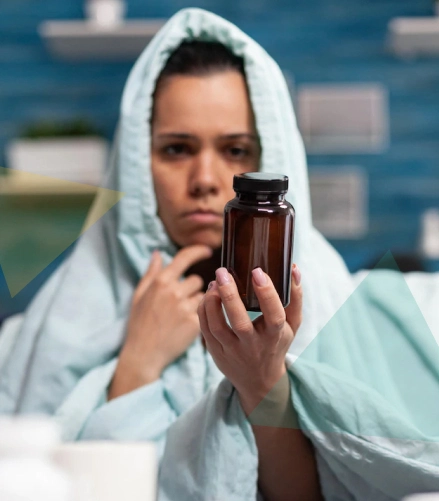What Is An Opioid?
Opioids have become some of the most popular medication that is used to assist in the treatment of pain. These drugs are made from a chemical that is found in the natural environment. The active compound is known as opium and is extracted from the poppy plant.
Today, not all opioid drugs that are available on the market contain the natural opium that is found in the poppy plant. Many pharmaceutical companies have started to develop synthetic compounds that feature a structure that is very similar to that of the natural opium. In these cases, the drugs made will yield a similar result compared to using a drug that contains a natural opium compound.
While the drugs are generally considered effective, there is a safety profile that is often taken into consideration before a patient is prescribed a type of Opioid medication. Failure to understand these risks can lead to potential overdoses, life-threatening complications, and more. Furthermore, opioid drugs have also been shown to yield the potential to cause addiction, which brings about further concern when looking at the high prevalence of opioid use in the general population.
Apart from yielding a reduction in pain symptoms experienced by the patient, the use of opioids may also bring about a relaxed state. Taken in higher doses may also result in a “high” feeling. This is why there is a concern regarding the recreational use of these medicines.

When And Who Manufactured Them?
The very first version of an Opioid was morphine. The development of the drug took quite a significant period of time, however. Friedrich Serturner was the very first to uncover the effectiveness of the poppy plant and successfully extract the specific compound that gave the plant these medicinal properties. Friedrich Serturner was a German pharmacist. He first discovered the properties of the poppy plant in the early years of the 1800s.
Friederich identified a specific type of opium that was part of the poppy plant during his research. It was the alkaloid that formed part of the plant that caused the compound to yield medicinal properties that caused a person to experience not only a type of “high,” but also a reduction in pain in the body.
Following the discovery of this compound, the pharmacist continued his efforts to isolate this particular compound. Friederich spent quite a few years isolating the chemical in order to produce a drug.
This marked the very first time when the alkaloid was successfully extracted from the poppy plant. From this point, Friederich spent several additional years testing the compound that he was able to extract. He used stray dogs for many of his experiments. The pharmacist was the subject of many experiments as well.
What Are Some Brand Names Of Opioids?
Since the initial isolation of the alkaloid from the poppy plant, a number of pharmaceutical companies have developed their own varieties of these drugs and commercialized the medicine as painkillers.
While morphine is often considered the “original” opioid, there are many alternative versions of the drug available in pharmacies and other healthcare settings today. Morphine is often sold under the brand names Avinza and Kadian, but generic options are also available.
Hydrocodone and oxycodone are two other popular types of opioids that are widely prescribed to patients with certain conditions that are known to cause painful symptoms. A common brand name for hydrocodone is Vicodin. Oxycodone is often sold as Percocet or OxyContin.
Other types of opioids that are also relatively common, especially among prescription painkillers, include:
- Codeine
- Fentanyl
- Oxymorphone (Often sold under the brand name Opana)
Do Opioids Cure Anything? Or Just Temporarily Cover Up Pain?
When it comes to looking at the use of opioids, it is crucial for patients to understand that this drug is simply a compound that is able to provide temporary relief of pain by blocking certain receptors in the human body.
The drug was not developed and has never been intended to treat any condition or to cure any type of disease. Even though often utilized as a way to help patients with cancer cope with pain, the drug acts as a bandage and covers up symptoms that the patient is experiencing. It does not provide treatment for any type of underlying condition.

Who Prescribes Them Most?
When it comes to looking at the use of opioids, it is crucial for patients to understand that this drug is simply a compound that is able to provide temporary relief of pain by blocking certain receptors in the human body.
The drug was not developed and has never been intended to treat any condition or to cure any type of disease. Even though often utilized as a way to help patients with cancer cope with pain, the drug acts as a bandage and covers up symptoms that the patient is experiencing. It does not provide treatment for any type of underlying condition.
Who Prescribes Them Most?
Any licensed practitioner or specialist is able to provide a prescription for opioids when a patient presents with pain-related symptoms. In the majority of cases, it is found that opioids are often prescribed to patients by clinicians. There is also a general concern regarding the high number of prescriptions for opioid drugs reached out to patients by general practitioners.
Patients who have been admitted to a hospital may also be provided with a prescription for opioids by the specialist overseeing their care. In such a case, morphine is often one particularly common option, especially following events such as surgery.
It should be noted, however, that even though often prescribed, there are certain opioids, such as codeine, that can be obtained over-the-counter without the need for a prescription.
How Long Do People Need To Take These Drugs?
While there are cases where a patient may be provided a prescription for an opioid drug when they suffer from chronic pain, this is rare, and the patient then needs to be continuously monitored by the prescribing physician. Long-term use of the drug can be appropriate when the physician monitors the patient and the individual taking the drug closely adheres to all dosage instructions that are provided to them, but this is not a recommendation.
In most cases where a patient is prescribed an opioid, the drug will only be provided to them for a short period of time to assist in the treatment of acute pain. There are many cases where opioids will only be offered to the patient for two or three days. This is often the case with a simple surgical procedure.
The physician may advise the patient to take opioids for a longer period, sometimes over the course of multiple weeks, until their pain symptoms subside. This is, however, a case where careful monitoring is once again necessary.
Is Using Opioids For Long Term Use (Over 12 Weeks) Effective For Pain?
There are cases where medications like non-steroidal anti-inflammatory drugs and other painkillers yield ineffective results for a patient with a chronic pain condition. Arthritis and fibromyalgia are two examples of such conditions. When this occurs, the physician may turn to opioids as a last resort to see if this type of drug can yield a more effective level of pain relief in the patient.
The pain-relieving properties of the opioid tend to be stronger during the early stages of treatment. As the body starts to get used to the chemical compounds that are part of the drug, it starts to develop tolerance the opioid. Unfortunately, this also means the drug becomes less effective.
At this time, the drug may not be as effective for reducing pain symptoms than it was during the initial stage of treatment. The patient might need to have an increase in their dosage, but this is also where things start to become more hazardous. The higher the dose, the more of a risk there is that the patient may overdose on the opioids and experience potentially life-threatening complications.
How Do People Get Off Of These Drugs in Indianapolis, IN?
Since opioids cause dependency, it is critical to understand that suddenly stopping the use of the drug is likely to cause a person to suffer from a number of withdrawal symptoms. In fact, some studies have found that there are life-threatening complications that can result from opioid withdrawal syndrome, which occurs when a more severe dependency has developed.
When a person has used opioids for some time, a doctor will usually provide the individual with details on how they need to taper off from the use of the drug. Quitting cold turkey tends to cause unpleasant side effects that could lead to the patient turning toward opioids to reduce these symptoms again. At Addiction Rehab Centers Opioid detox and addiction treatment center in Indianapolis, IN, we can help you taper off of opioids as well as provide a solid foundation for the future of your recovery from addiction.
How Many People Die Every Year From This Addiction?
An estimated 34 million people use some type of opioid each and every year. In just 2016 alone, according to the World Health Organization, at least 27 million individuals throughout the world suffered from a substance abuse disorder that involved the use of opioids. When it comes to deaths – it should be noted that around 118,000 people died due to the presence of opioid use disorder. In these cases, the patients usually experienced complications due to an overdose of the drug or due to long-term effects that the chemical had in their bodies.
Why Are They So Addictive?
The main reason why people are becoming addicted to opioids is due to the effect that the chemicals in the drug have in the human brain. When a person takes an opioid drug, there is a release of neurotransmitters known as endorphins. These neurotransmitters are usually released in scenarios where a person feels good, such as when they achieve sometime.
When the endorphins are released, pain perception is altered. This helps to reduce the feeling of pain in the body. Additionally, the person also experiences a feeling of pleasure. As the effects of the medication start to wear off, the person might start to feel like they want to take more in order for them to continue experiencing this particular effect.
How Many People In Our Country Take Them?
In the United States alone, an estimated 58 prescriptions for opioids are reached out for every 100 individuals living in the country. Over 17% of the population in this particular country had one or more prescription for opioid drugs filled in 2017. Furthermore, it has also been found that the average person would obtain more than three prescriptions for opioids during this same period.
Are These Drugs All FDA Approved?
There is a number of opioid drugs that physicians are able to prescribe to patients today. The FDA is responsible for closely regulating the approval and distribution of these drugs, and may often provide warnings and certain guidelines for physicians to follow when it comes to providing patients with prescriptions.
Conclusion
It is also important to note that not all drugs that are classified as opioids are FDA-approved. For example, Heroin is classified as an opioid drug, yet there is no FDA approved to use for this particular drug. In fact, heroin is an exceptionally dangerous drug that has caused millions of deaths already. Contact Addiction Rehab Centers for more details.
